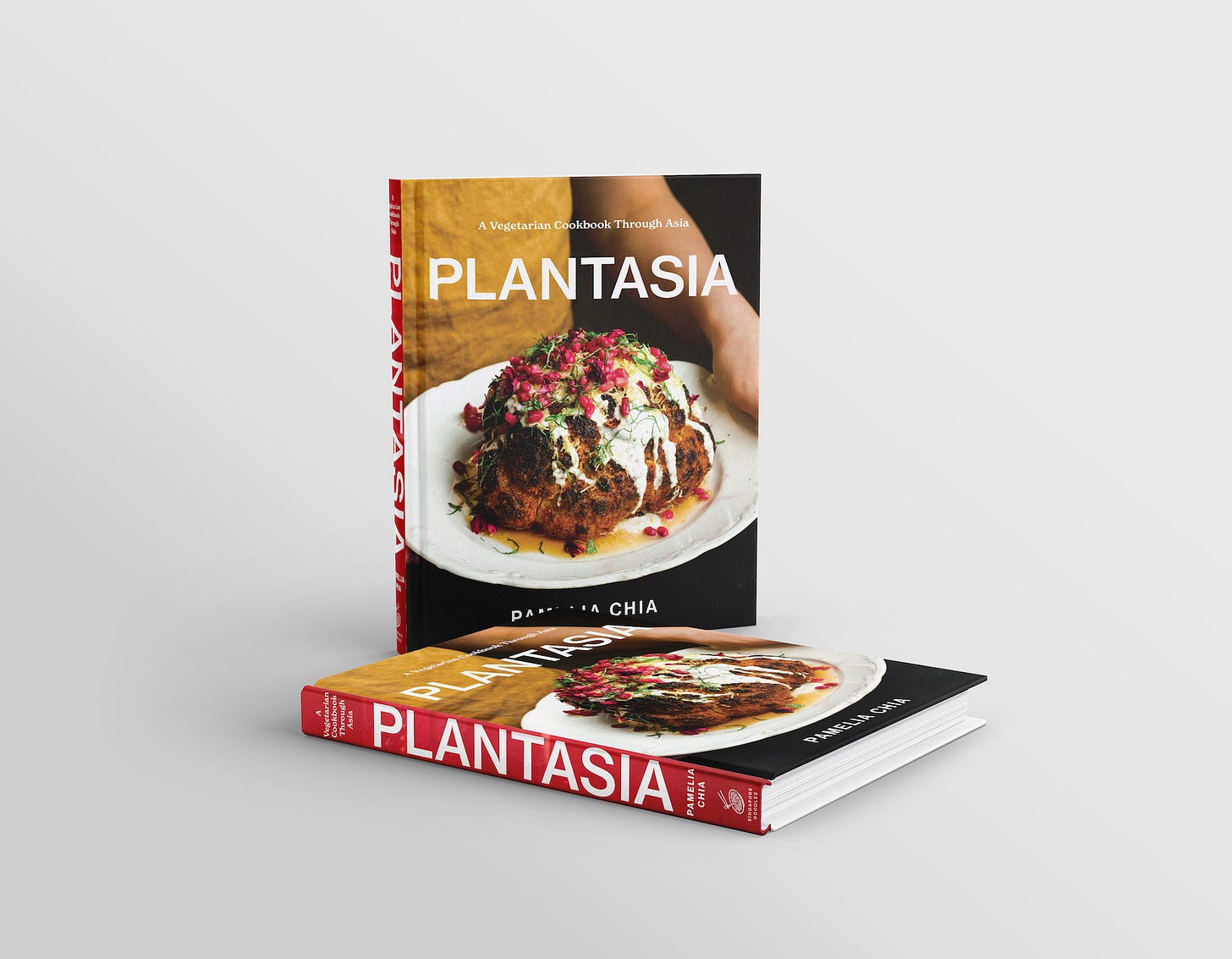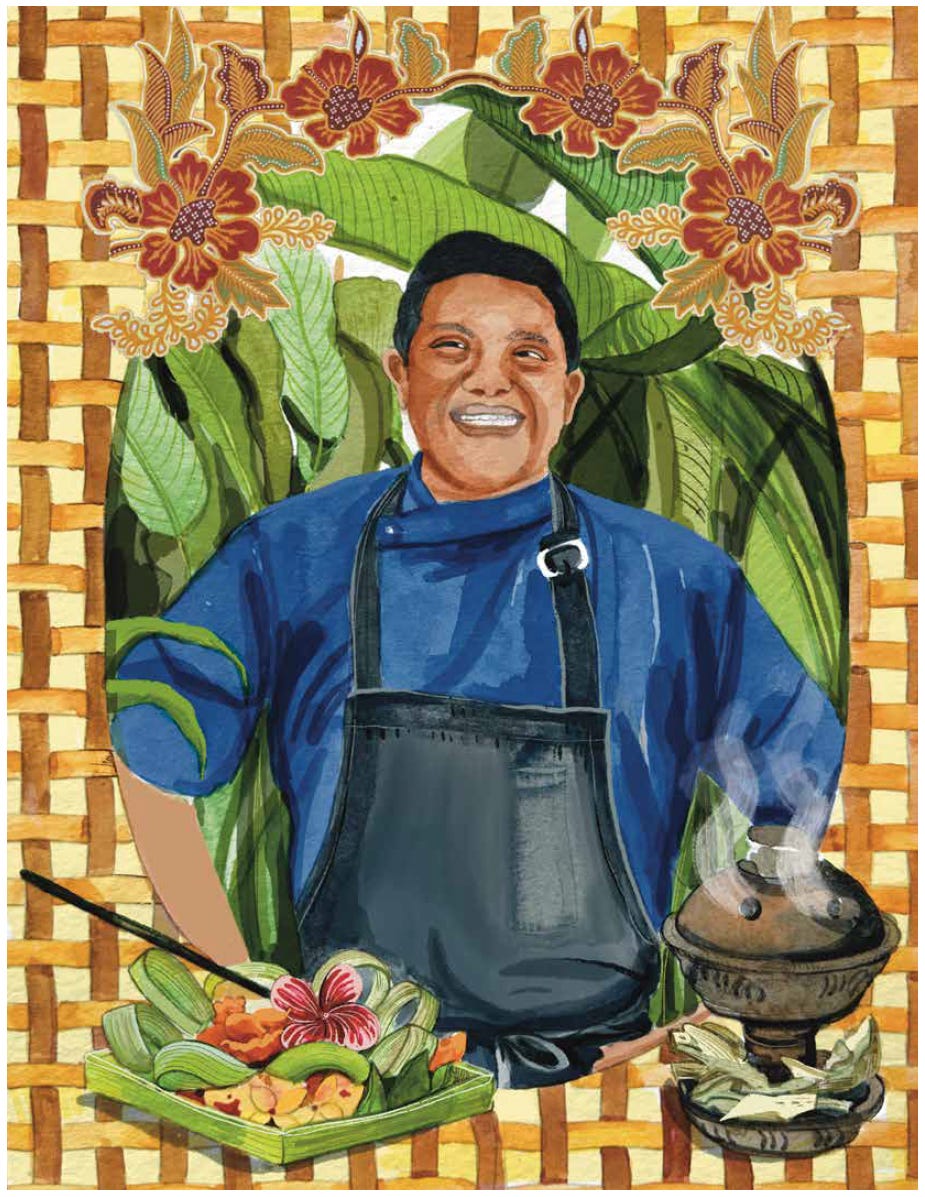Inside Plantasia
I had a blast sharing about Plantasia last week even though my hands were quaking the whole time (I’m sorry you guys received the same email three times!!). While I don’t think I’ll ever shake the nerves until the book is in the hands of readers, it was such a relief that people responded so enthusiastically to the mission of the book, its concept, and the cover. To those of you who pre-ordered the book, THANK YOU. I really appreciate it!
If you are new to this newsletter and would like to read about what Plantasia is about and why I chose to write it, click here. Now for the fun bit: what’s in the book? Let me take you through some of my favourite features.
‘How to Make Vegetables Taste Great’: This is a section in the book right before you get to the recipes. While you can sear a simply seasoned piece of beef and it would taste great, vegetables often need more help. This section is all about providing you with a framework to think about when crafting your vegetable dishes.
You know how sometimes when you scan through a recipe, or when someone describes their favourite dish and you immediately pick up on details or traits that make the dish a success? This framework is exactly that - it is your compass to better vegetable cooking! Shreya, the very talented illustrator who worked with me on this book, did black-and-white line drawings that complemented the text so well!
The Sweetened chapter: The heart of the book is divided into 8 chapters - Raw, Steamed & blanched, Simmered, Fried, Deep-fried, Charred & grilled, Roasted & baked, Sweetened. Of these, the Sweetened chapter was particularly fun to work on because it showcased the versatility of plants not just in the savoury world, but also in sweet applications. Some vegetables such as peas, edamame and pumpkin have such an inherent sweetness that make using them in desserts obvious. And then you have things like beans that I’ve realised are used very commonly in Asia in desserts, but not so much in the West. I also had fun with exploring ingredients such as peach gum, which I think is a great ingredient that more people should know about.
Photography: There’s a good mix of recipes in this book. Some are great for everyday, no-fuss cooking like my mum’s celery and black fungus salad. Others, like this podi-rubbed roasted cauliflower pictured below, are more involved and perfect for sharing with friends. While all the dishes in the book are photographed, the more challenging ones are accompanied with step-by-step photography to help you visualise the dish better.
Recipe format: A personal habit that I have when cooking from recipes is to scribble a separate version for myself that embeds the ingredients within the methodology. I did this when I cooked professionally and still do it now when I cook at home. I see versions of this in heritage cookbooks and in Julia Child’s cookbooks, but it isn’t that common, probably because this format takes up more space on the page.
I wanted to format my recipes this way for this cookbook so that it is more intuitive for the cook and you’ll never forget an ingredient when cooking, even though this means more work when it comes to the design and proofreading.
Stories & recipes from 24 contributors: Because Asia is such a broad region, I know that the only way for me to do it justice is to have more voices in the book. I interviewed a total of 24 chefs, culinary teachers, and food writers with a connection to different parts of Asia - Vietnam, Thailand, Singapore, Tibet, Korea, Japan, Burma, India, Indonesia and more. These conversations really transformed the way I looked at vegetables and taught me to see potential in them. Here’s an excerpt from my conversation with Korean chef Sunny Lee:
These contributors also each shared or inspired a recipe in the book from their heritage. One of my favourites was ginataang munggo, inspired by RG-Enriquez Diez of Astig Vegan. While I’ve enjoyed mung beans as a sweet filling for many snacks in Singapore, I had never eaten it in a savoury context, in the format of a stew. It was such a hit with us that I made this multiple times in the colder months and it was as belly-warming as a meat stew, nutritious, and completely vegan.
Watercolour art: I wanted to use art rather than photographs to depict each contributor for the sake of standardisation. But also, with art, we could really take things a step further by putting more thought into the backgrounds and other illustrative elements to accentuate their culture, things they spoke about in the interview etc. This illustration of Chef Wayan who hails from Bali is one of my favourites - in it you can elements of batik and woven rattan, and banana leaves in the background. I’m contemplating the thought of printing all 24 illustrations as posters and frame them up as art at home - would that be creepy? 😂
An allium-free recipe index: Once, on a trip back to Singapore, I cooked dinner for an extended family gathering. My cousin’s vegetarian boyfriend was present and my aunts were emphasising that I couldn’t use garlic, onion, spring onions, or chives as he’s a Buddhist vegetarian. It made me think - I’d never seen a menu or cookbook index with an allium-free label. Dishes are typically labelled vegan, vegetarian, nut-free, gluten-free etc but never allium-free. Because vegetarianism and veganism have often been understood and explored from such a Eurocentric lens, I felt that including allium-free labels were important for the index in this book:
Thank you again to all who pre-ordered the book even before seeing any of this material - pre-ordering is one of the best ways to express your support, helps us ascertain demand, plus you’ll get your copies of the book ahead of everyone else! If you’re enthused about this book, please share this email or the link to pre-order with your friends and favourite bookstores. It’s still awhile to go before the book launches in October, but if you have an event or collaboration in mind, I’d love to hear your ideas.
Advanced copy reviews:
"This authoritative guide through Asian techniques and flavours will revolutionise your cooking. Brilliant, innovative and incredibly inspiring!" - Mandy Yin, restaurateur and author of Sambal Shiok: The Malaysian Cookbook
"Pamelia has written a vibrant and scrumptious ode to the vegetables of Asia. Her cookbook both honours tradition and pushes the boundaries on what a plant-based feast can look like." - Clarissa Wei, journalist and author of Made in Taiwan
“Plantasia is an absolute joy to read. Pamelia's gift for tasty prose and captivating visuals, along with a liberal seasoning of helpful cooking tips and Asian cultural anecdotes, make this a real gem of a cookbook. From tofu to chaat, thunder tea to peach gum — flavours and ingredients of our Asian upbringing that I adored — it's truly gratifying to see all these plant-based Asian ingredients shine!” - Yi Jun Loh, writer and founder of Jun & Tonic
“Pamelia’s newest book takes us on an exhilarating journey to Asian vegetable heaven. With a total of 25 cooks sharing stories and flavour-building techniques, this cookbook is a must-have for vegetable lovers and Asian food lovers alike.” - Maureen Tan, culinary teacher and author of Java












